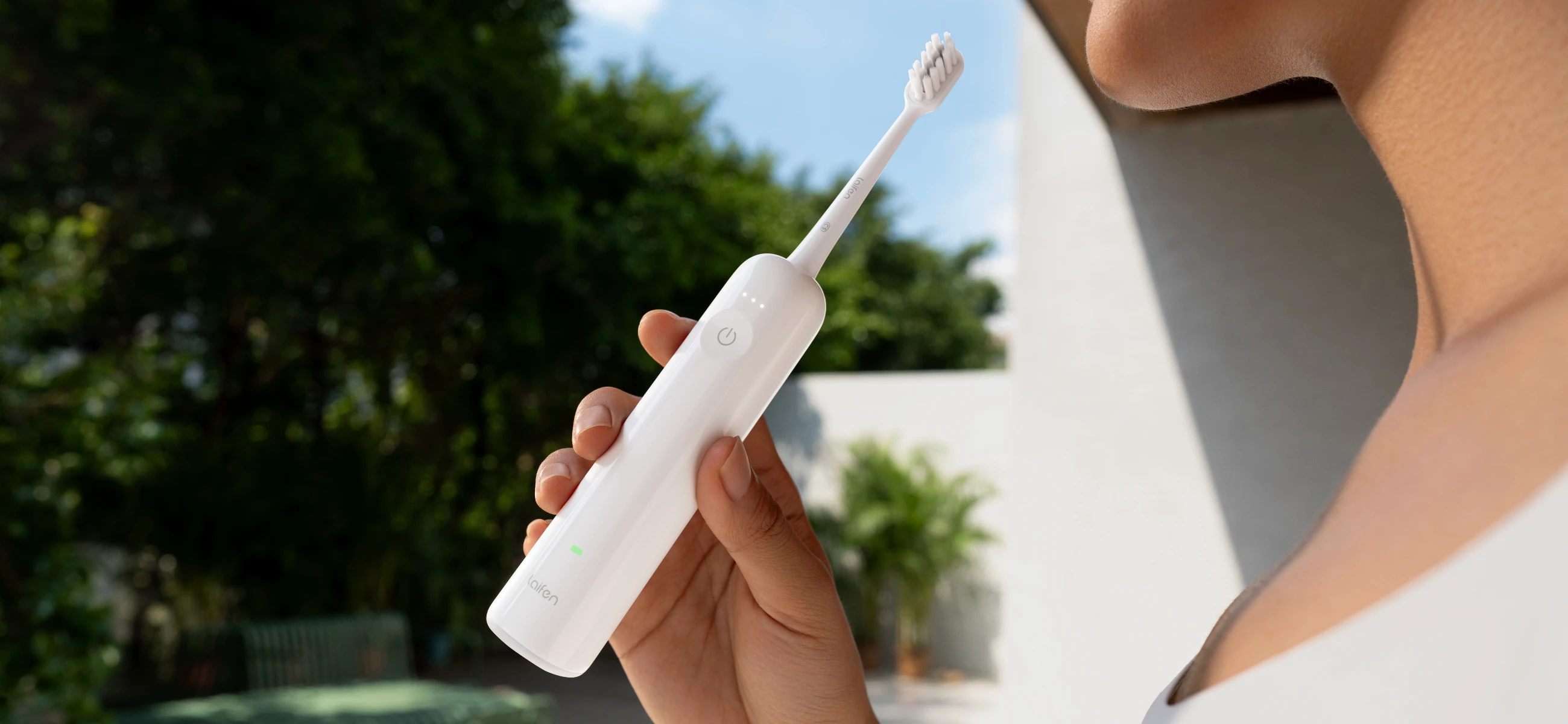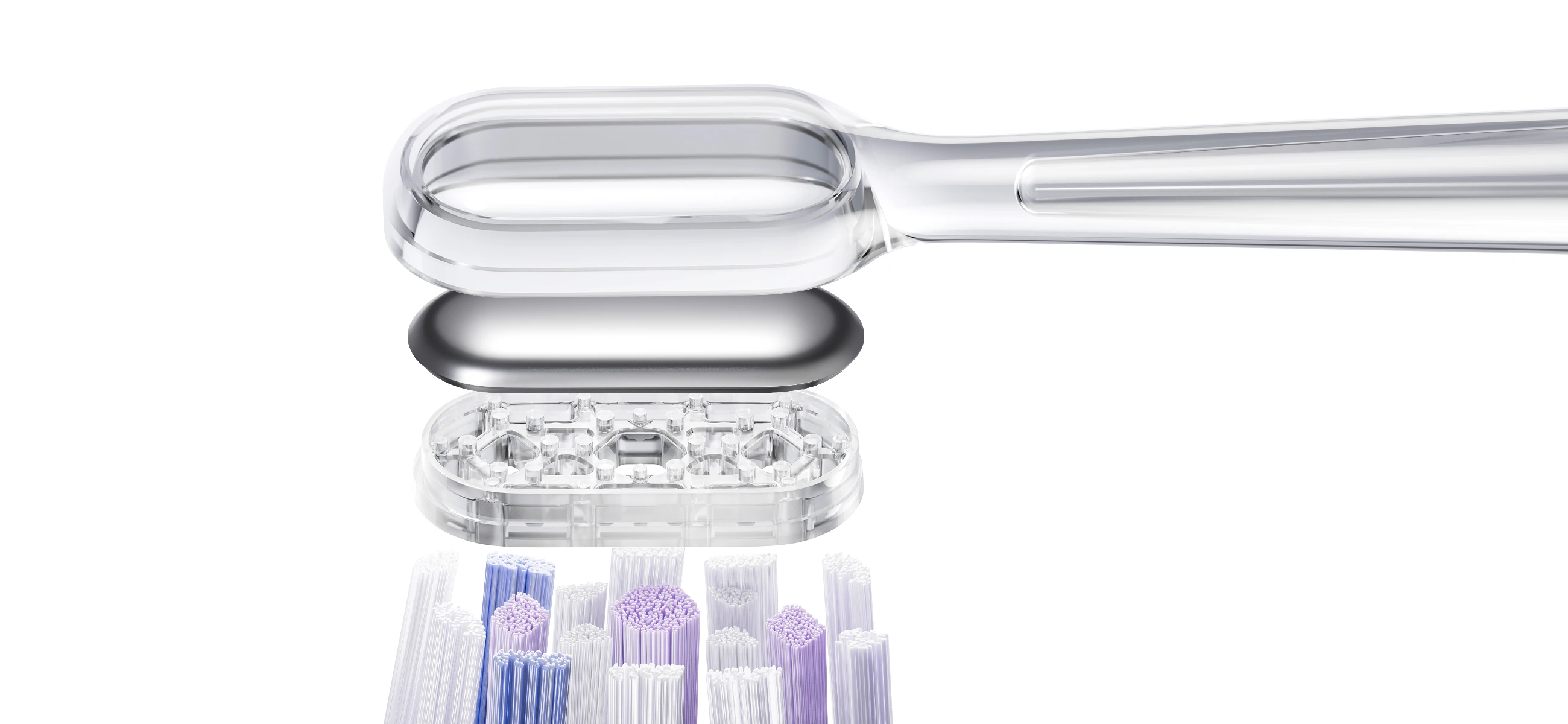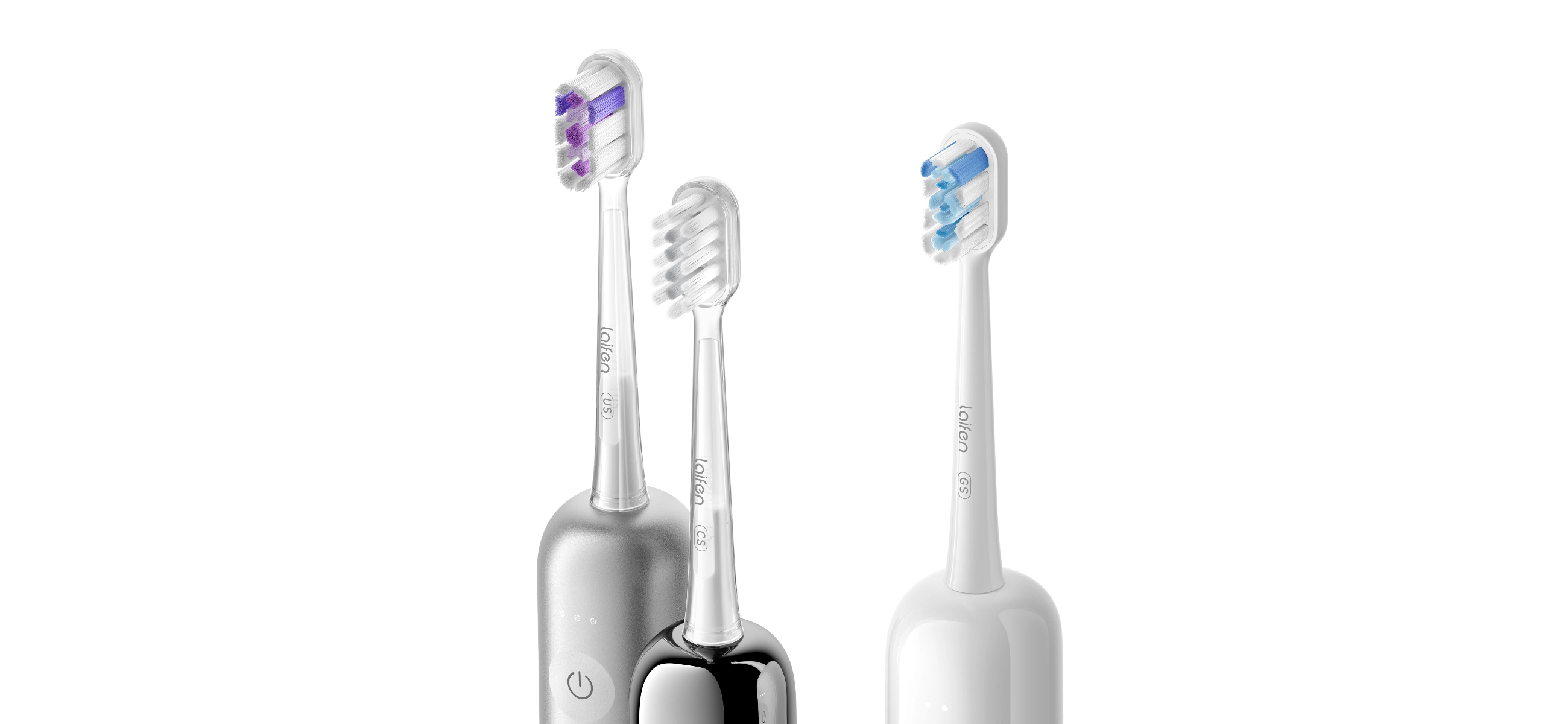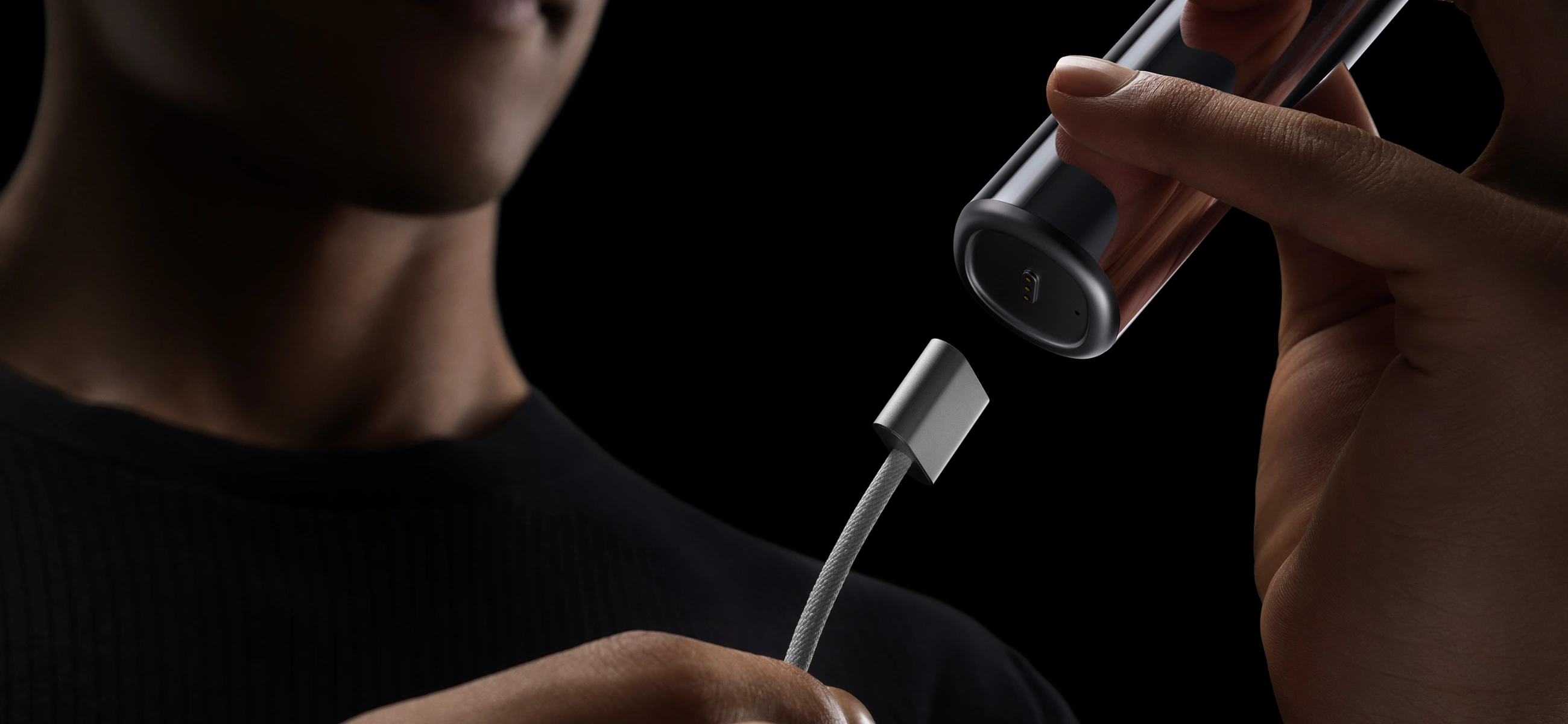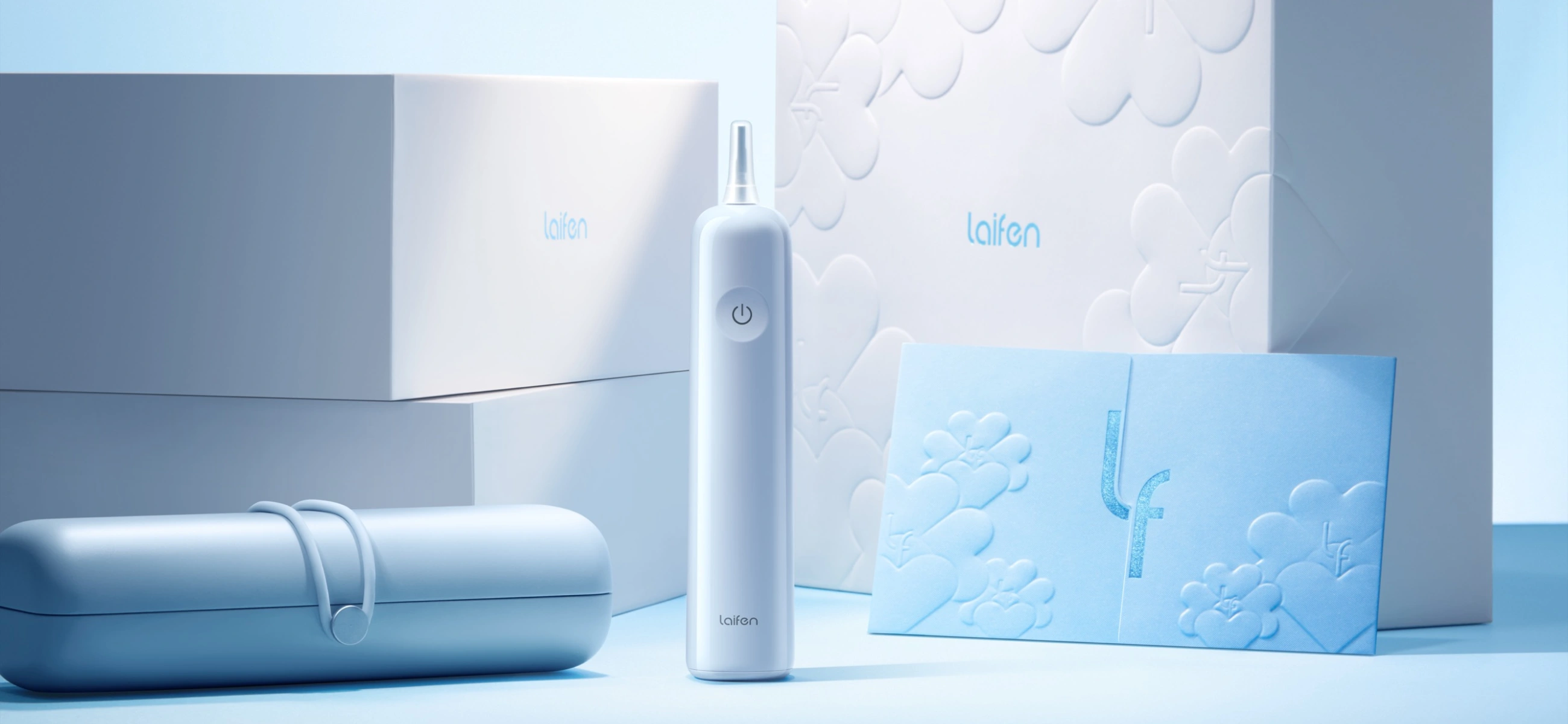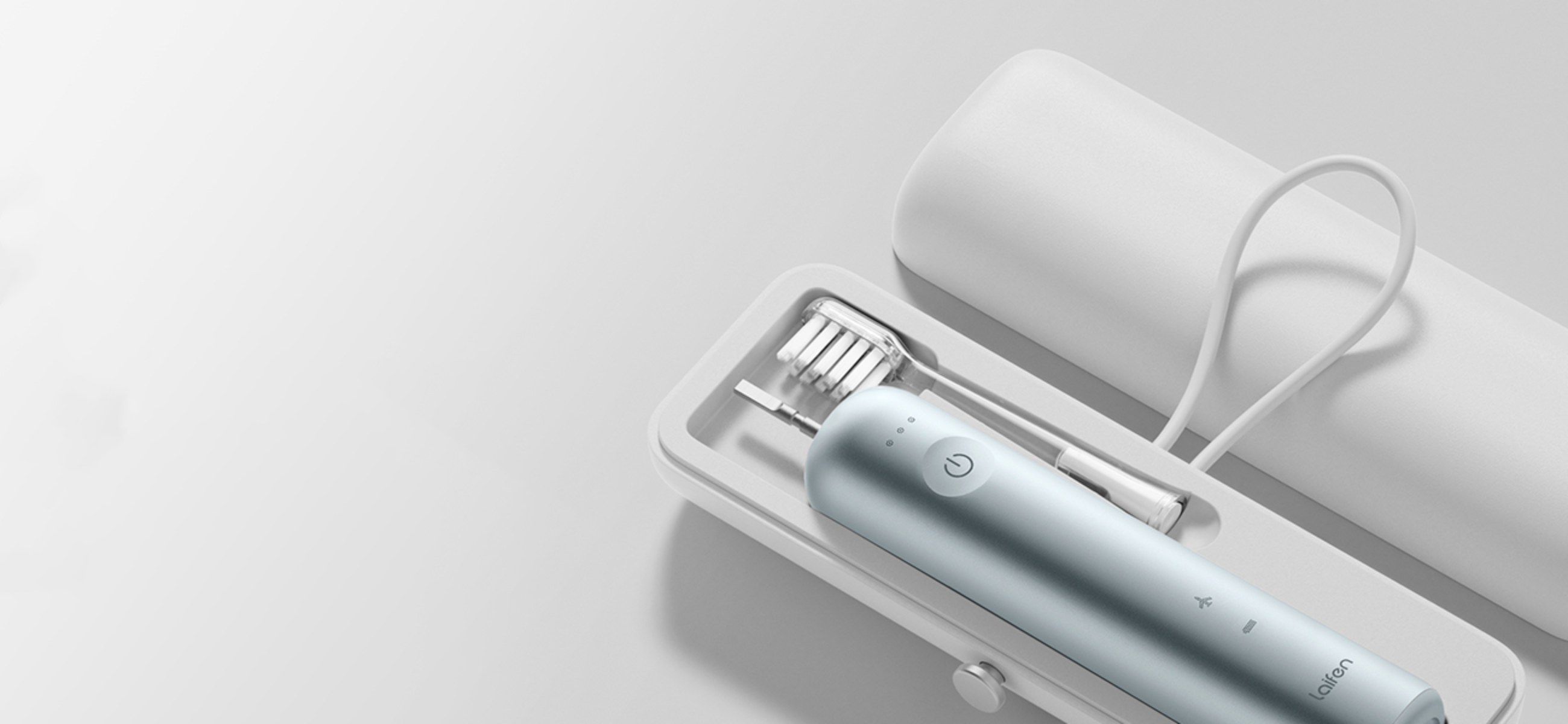Low-quality brushes with stiff bristles can be harmful to your brackets and wires. Instead, get a toothbrush with soft, durable bristles and heads designed for braces. This helps a soft, effective clean, maintaining your oral health and protecting your braces, ultimately making your orthodontic experience smoother and more comfortable. Here is the top-rated electric toothbrush for your braces.
How to choose a good electric toothbrush if you have braces in mouth?
Here are three advics for you to choose from an electric toothbrush from the marketing.
Bristle softness and quality
You can select a toothbrush with soft, high-quality bristles to avoid damaging your braces and gums. Soft bristles are good enough to clean around brackets and wires effectively without causing irritation or wear.
Specialized brush heads
Get electric toothbrushes with brush heads for braces. These heads often feature unique shapes and bristle arrangements that make it easier to clean around orthodontic hardware.
Cleaning modes and features
It’s more advised to choose a toothbrush with multiple cleaning modes, including gentle or sensitive settings. Features like pressure sensors can also be beneficial, as they prevent you from brushing too hard and damaging your braces or gums. Dentist advise people choose an electric toothbrush with a timer to brush teeth correctly.
Can I brush my teeth normally with braces?
Brushing your teeth with braces requires a bit more care and attention, but with the right technique and tools, it’s manageable. Here are our user experiences who have navigated this journey:
Emily, 17:
“When I first got braces, brushing was a challenge. I had to learn to angle my toothbrush to reach all the nooks and crannies around the brackets. Using an electric toothbrush with a special orthodontic head made a huge difference. It was much easier to keep my teeth clean and my gums healthy.”
Michael, 23:
“I used a manual toothbrush at first, but it didn’t do a great job of cleaning around my braces. I switched to an electric toothbrush with soft bristles and multiple cleaning modes. It felt weird at first, but I got used to it quickly. The pressure sensor helped me avoid brushing too hard, which was a big help.”
Sarah, 15:
“Brushing my teeth with braces took more time, but I got into a routine. I used a small, compact brush head to reach around the wires and brackets. Flossing was tough, but using a water flosser made it easier. My orthodontist recommended brushing after every meal, which helped prevent food from getting stuck and causing problems.”
Is an electric toothbrush good for teeth braces?
Yes, an electric toothbrush can be quite beneficial for those with braces. Here’s why:
Effective cleaning
Electric toothbrushes with specialized orthodontic heads provide superior cleaning around brackets and wires. The high-speed vibrations and oscillations help remove plaque and food particles more efficiently than manual brushing. Laifen Wave combines both vibrations and oscillations intelligently and will thus help you reach a deep cleaning result.
Ease of use
Many users find electric toothbrushes easier to use with braces. The automatic movement of the bristles gives you thorough cleaning without the need for intricate manual brushing techniques.
Advanced features
Electric toothbrushes often come with features like timers and multiple cleaning modes. Laifen Wave makes this better by providing users with an app to control the specific needs. Timers help you brush for the recommended two minutes, while pressure sensors prevent you from brushing too hard and protdct your braces and gums.
Which is the best electric toothbrush for teenager with braces?

For teenagers with braces, Laifen Wave oscillation and vibration electric toothbrush stands out as an excellent choice. This advanced electric toothbrush is designed to meet the unique needs of those undergoing orthodontic treatment.
One of the key benefits of the Laifen Wave is its customizable settings. Teenagers can easily adjust the vibration intensity and other settings through a user-friendly app. This adaptability is so useful for those with braces, as it allows for a gentler approach to cleaning sensitive areas.
It also comes with high-quality replacement heads that feature soft bristles. These bristles are better on the gums and effective at cleaning around brackets and wires, reducing the risk of irritation or damage to the braces. So, you do not need to change the head too often. Surprisingly! Wave’e heads are very cheap, only $9.99 you can get three.
Moreover, the sleek design and modern features of the Laifen Wave make it appealing to teenagers. You can discover more on laifentech.com. If you want to get some tips to brush your braced teeth, continue to read!
5 tips to remember when brushing your teeth with braces
If you want to make your brushing experience better with braces, you can read the 5 tips.
Tip 1. Use a soft-bristled brush
Choose a toothbrush with soft bristles to avoid damaging your braces and gums. Soft bristles are mild enough to clean around brackets and wires swiftly without causing irritation.
Tip 2. Brush at the right angle
Hold your toothbrush at a 45-degree angle to the gum line. This helps you clean both the teeth and the gum line.
Tip 3. Take your time
Brushing with braces requires more time and attention. Spend at least two minutes brushing your teeth. Don’t rush, as thorough cleaning is essential to prevent cavities and gum disease.
Tip 4. Use interdental brushes or floss
Regular flossing is challenging with braces, so try using interdental brushes or floss threaders. These tools help you clean between teeth and around brackets and wires. Best of all, it can remoe some food particles and plaque that your toothbrush might miss.
How long to brush my teeth with braces?
When you have braces, it’s suggested to brush your teeth for at least two minutes, but spending a bit more time can be even more beneficial. Aim for about three to five minutes to leave you thoroughly clean around all the brackets and wires. This extra time helps you reach all the nooks and crannies where food particles and plaque can easily get trapped.
Dividing your mouth into quadrants can be a helpful approach. Spend about 30 seconds to one minute on each section, brushing both the outer and inner surfaces of your teeth, as well as the chewing surfaces.
Pay special attention to the areas around your braces, using small circular motions and angling the brush to clean above and below the brackets.

